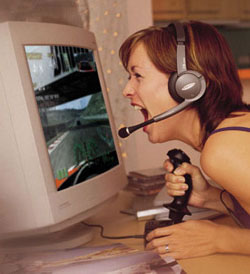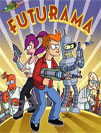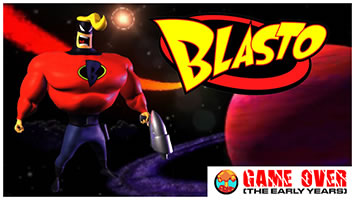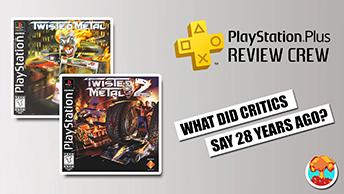- CLASSIC MAGAZINES
- REVIEW CREW
A show recapping what critics thought back
when classic games first came out! - NEXT GENERATION'S BEST & WORST
From the worst 1-star reviews to the best
5-stars can offer, this is Next Generation! - NINTENDO POWER (ARCHIVE)
Experience a variety of shows looking at the
often baffling history of Nintendo Power! - MAGAZINE RETROSPECTIVE
We're looking at the absolutely true history of
some of the most iconic game magazines ever! - SUPER PLAY'S TOP 600
The longest and most ambitious Super NES
countdown on the internet! - THEY SAID WHAT?
Debunking predictions and gossip found
in classic video game magazines! - NEXT GENERATION UNCOVERED
Cyril is back in this spin-off series, featuring the
cover critic review the art of Next Generation! - HARDCORE GAMER MAGAZING (PDF ISSUES)
Download all 36 issues of Hardcore Gamer
Magazine and relive the fun in PDF form!
- REVIEW CREW
- ELECTRONIC GAMING MONTHLY
- ELECTRONIC GAMING MONTHLY RANKS
From Mario to Sonic to Street Fighter, EGM
ranks classic game franchises and consoles! - ELECTRONIC GAMING MONTHLY BEST & WORST
Counting down EGM’s best and worst reviews
going year by year, from 1989 – 2009! - ELECTRONIC GAMING BEST & WORST AWARDS
11-part video series chronicling the ups and
downs of EGM’s Best & Worst Awards!
- ELECTRONIC GAMING MONTHLY RANKS
- GAME HISTORY
- GAME OVER: STORY BREAKDOWNS
Long-running series breaking down game
stories and analyzing their endings! - A BRIEF HISTORY OF GAMING w/ [NAME HERE]
Real history presented in a fun and pithy
format from a variety of game historians! - THE BLACK SHEEP
A series looking back at the black sheep
entries in popular game franchises! - INSTANT EXPERT
Everything you could possibly want to know
about a wide variety of gaming topics! - FREEZE FRAME
When something familiar happens in the games
industry, we're there to take a picture! - I'VE GOT YOUR NUMBER
Learn real video game history through a series
of number-themed episodes, starting at zero! - GREAT MOMENTS IN BAD ACTING
A joyous celebration of some of gaming's
absolute worst voice acting!
- GAME OVER: STORY BREAKDOWNS
- POPULAR SHOWS
- DG NEWS w/ LORNE RISELEY
Newsman Lorne Riseley hosts a regular
series looking at the hottest gaming news! - REVIEW REWIND
Cyril replays a game he reviewed 10+ years
ago to see if he got it right or wrong! - ON-RUNNING FEUDS
Defunct Games' longest-running show, with
editorials, observations and other fun oddities! - DEFUNCT GAMES QUIZ (ARCHIVE)
From online quizzes to game shows, we're
putting your video game knowledge to the test!- QUIZ: ONLINE PASS
Take a weekly quiz to see how well you know
the news and current gaming events! - QUIZ: KNOW THE GAME
One-on-one quiz show where contestants
find out if they actually know classic games! - QUIZ: THE LEADERBOARD
Can you guess the game based on the classic
review? Find out with The Leaderboard!
- QUIZ: ONLINE PASS
- DEFUNCT GAMES VS.
Cyril and the Defunct Games staff isn't afraid
to choose their favorite games and more! - CYRIL READS WORLDS OF POWER
Defunct Games recreates classic game
novelizations through the audio book format!
- DG NEWS w/ LORNE RISELEY
- COMEDY
- GAME EXPECTANCY
How long will your favorite hero live? We crunch
the numbers in this series about dying! - VIDEO GAME ADVICE
Famous game characters answer real personal
advice questions with a humorous slant! - FAKE GAMES: GUERILLA SCRAPBOOK
A long-running series about fake games and
the people who love them (covers included)! - WORST GAME EVER
A contest that attempts to create the worst
video game ever made, complete with covers! - LEVEL 1 STORIES
Literature based on the first stages of some
of your favorite classic video games! - THE COVER CRITIC
One of Defunct Games' earliest shows, Cover
Critic digs up some of the worst box art ever! - COMMERCIAL BREAK
Take a trip through some of the best and
worst video game advertisements of all time! - COMIC BOOK MODS
You've never seen comics like this before.
A curious mix of rewritten video game comics!
- GAME EXPECTANCY
- SERIES ARCHIVE
- NINTENDO SWITCH ONLINE ARCHIVE
A regularly-updated list of every Nintendo
Switch Online release, plus links to review! - PLAYSTATION PLUS CLASSIC ARCHIVE
A comprehensive list of every PlayStation
Plus classic release, including links! - RETRO-BIT PUBLISHING ARCHIVE
A regularly-updated list of every Retro-Bit
game released! - REVIEW MARATHONS w/ ADAM WALLACE
Join critic Adam Wallace as he takes us on a
classic review marathon with different themes!- DEFUNCT GAMES GOLF CLUB
Adam Wallace takes to the links to slice his way
through 72 classic golf game reviews! - 007 IN PIXELS
Adam Wallace takes on the world's greatest spy
as he reviews 15 weeks of James Bond games! - A SALUTE TO VAMPIRES
Adam Wallace is sinking his teeth into a series
covering Castlevania, BloodRayne and more! - CAPCOM'S CURSE
Adam Wallace is celebrating 13 days of Halloween
with a line-up of Capcom's scariest games! - THE FALL OF SUPERMAN
Adam Wallace is a man of steel for playing
some of the absolute worst Superman games! - THE 31 GAMES OF HALLOWEEN
Adam Wallace spends every day of October afraid
as he reviews some of the scariest games ever! - 12 WEEKS OF STAR TREK
Adam Wallace boldly goes where no critic has
gone before in this Star Trek marathon!
- DEFUNCT GAMES GOLF CLUB
- DAYS OF CHRISTMAS (ARCHIVE)
Annual holiday series with themed-episodes
that date all the way back to 2001!- 2015: 30 Ridiculous Retro Rumors
- 2014: 29 Magazines of Christmas
- 2013: 29 Questionable Power-Ups of Christmas
- 2012: 34 Theme Songs of Christmas
- 2011: 32 Game Endings of Christmas
- 2010: 31 Bonus Levels of Christmas
- 2009: 30 Genres of Christmas
- 2008: 29 Controls of Christmas
- 2007: 34 Cliches of Christmas
- 2006: 33 Consoles of Christmas
- 2005: 32 Articles of Christmas
- 2004: 31 Websites of Christmas
- 2003: 29 Issues of Christmas
- 2002: 28 Years of Christmas
- 2001: 33 Days of Christmas
- NINTENDO SWITCH ONLINE ARCHIVE
- REVIEW ARCHIVE
- FULL ARCHIVE
The Great Video Game Stress Ball Test

Stressed out?
But don't worry, because some of the biggest publishers in the world have you covered. Over the last two decades, some of the biggest players in the video game industry have given out simple (and effective) stress balls as convention swag. I'm talking about companies like Sega, Microsoft, 2K Sports and more, all hoping to help you relieve some stress and remember their name.
In this episode of A Brief History of Gaming, we thought it would be fun to take a look back at six of the most memorable video game stress balls. Will Sega finally come out on top? Does the size and shape matter? Do these balls even relieve stress? All these questions will be answered as we dig into The Great Video Game Stress Ball Test!
Sega Game Gear

Cause for Stress: Despite offering a strong library of 8-bit games, full Sega Master System support, a color screen and TV tuner, the Sega Game Gear was ultimately doomed to follow a distant second against Nintendo's Game Boy. Many of the system's best games came too late, failing to help Sega keep their first portable system alive. Most Game Gear titles, regardless of quality, were pushed to the back of the magazines and left to die with little to no advertising. Sega eventually pulled support and left the system to shrivel up and die.
Final Thoughts: This stress ball also works when thinking about the Sega CD, Sega 32X, Sega Saturn, Sega Nomad and, of course, the Sega Dreamcast. Each is stressful in different ways.
Frontlines: Fuel of War

Cause for Stress: Despite some clever ideas (including the ability to pilot a variety of remote controlled vehicles), Frontlines didn't exactly take off. Critics were disappointed by the game's multi-player focus and consumers didn't give it a chance. The game's me-too gritty military look felt all too familiar, even in 2008. The developers would later go on to make 2011's Homefront, the much-maligned big budget disaster for THQ. Developers Kaos Studios was closed permanently on June 13, 2011, a mere two days before the release of Homefront.
Final Thoughts: I'm not afraid of this black oil barrel. It sits on my shelf where it's safe, no matter how many people decide to shoot up my office. Every day of my life I thank Kaos Studios for not handing out red oil barrels.
Gotham Games

Cause for Stress: While things may have looked good in 2002, this Take-Two Interactive publisher was doomed to put out one uninspired licensed game after another. It's one thing to make horrible games based on Starsky & Hutch, Austin Powers, and Celebrity Deathmatch, but I draw the line at The Great Escape. When not polluting the world with a fake Marilyn Manson made out of fake clay, they wanted you to get your ass blown up in the warzone. Spec Ops: Airborne Commando, Serious Sam and two Conflict: Desert Storm games kept the company alive just long enough to be relevant.
Final Thoughts: Given the quality of games like Piglet's Big Game and Austin Powers Pinball, this bomb seems oddly apropos.
John Deere Harvest in the Heartland

Cause for Stress: Destineer hoped it would be the next Harvest Moon, but John Deere Harvest in the Heartland never bloomed. This Nintendo DS simulator was riddled with technical problems, including some save issues and lots of loading screens. It also turned out to be no fun, forcing players to perform endless amounts of pointless tasks for little reward. Forget Harvest Moon, this Destineer stinker was no match for the Farmville juggernaut.
Final Thoughts: If you're the kind of person that would rather tend to fake crops than shoot space aliens, then you probably don't have enough stress in your life to make this John Deere trinket worth your while.
Top Spin

Cause for Stress: Despite being a modest hit, Top Spin has bounced from company to company. First published by Microsoft (as part of their XSN Sports network) on the Xbox, these days Top Spin is known as a 2K Sports series. Even more stressful is the closing of PAM Development, the company responsible for most of the Top Spin releases. And while Top Spin 4 may have won over the critics on the Xbox 360 and PlayStation 3, the Wii port failed to make the grade. Top Spin has always been a franchise overshadowed by its tennis competition.
Final Thoughts: Much like the video game series it's based on, you probably shouldn't use this stress ball for your tennis needs.
Ubisoft Entertainment

Cause for Stress: Ubisoft may be the home to several big name franchises, but that doesn't make them immune to the ups and downs of the games industry. Recently we've seen the company struggle to recapture their footing after several major flops, division closings, rumors of a hostile takeover, disappointing returns on Rayman and much more. These days you're more likely to hear Ubi complain about the lack of original games than actually make original games. And what exactly is the publisher going to do now that Assassin's Creed is wrapping up?
Final Thoughts: Perhaps if Ubisoft had used traditional foam (and not cheap plastic and springs) Rayman Origins would have been a bigger hit.






HOME |
CONTACT |
NOW HIRING |
WHAT IS DEFUNCT GAMES? |
NINTENDO SWITCH ONLINE |
RETRO-BIT PUBLISHING
Retro-Bit |
Switch Planet |
The Halcyon Show |
Same Name, Different Game |
Dragnix |
Press the Buttons
Game Zone Online | Hardcore Gamer | The Dreamcast Junkyard | Video Game Blogger
Dr Strife | Games For Lunch | Mondo Cool Cast | Boxed Pixels | Sega CD Universe | Gaming Trend
Game Zone Online | Hardcore Gamer | The Dreamcast Junkyard | Video Game Blogger
Dr Strife | Games For Lunch | Mondo Cool Cast | Boxed Pixels | Sega CD Universe | Gaming Trend
Copyright © 2001-2025 Defunct Games
All rights reserved. All trademarks are properties of their respective owners.
All rights reserved. All trademarks are properties of their respective owners.
























